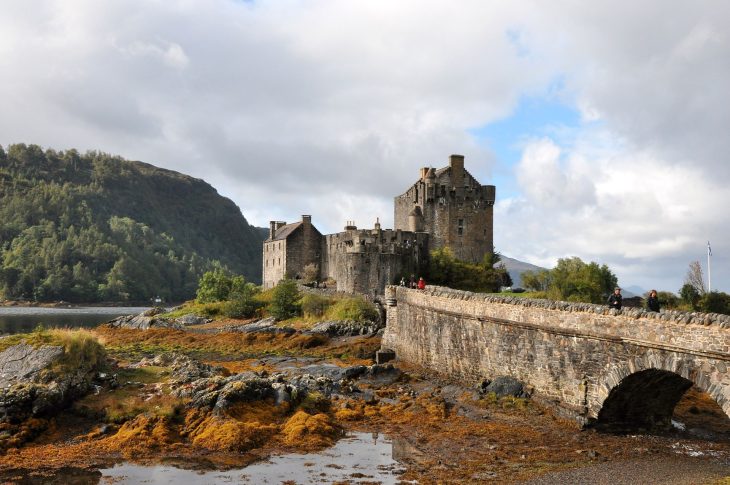
Word of the Day: Conflate
Today’s word of the day, courtesy of Merriam-Webster, is conflate. The history of this word is quite interesting. Merriam-Webster gives two definitions: “Two closely related meanings of the verb conflate are ‘to confuse,’ i.e. ‘to fail to differentiate,’ and ‘to blend or bring together’” (https://www.merriam-webster.com/word-of-the-day). It then provides an etymology: “We’re not just blowing hot air when we tell you that conflate can actually be traced back to the same roots as the English verb blow. Conflate comes from conflatus, a form of the Latin verb conflare (‘to blow together, to fuse’), which was formed by combining the prefix com-, meaning ‘with’ or ‘together,’ with the Latin verb flare, meaning ‘to blow.’ Blow’s ancestor, the Old English word blāwan, shares an ancestor with flare. When two or more things are conflated, they are figuratively ‘blown together’ either by someone’s confusion or ingenuity. Other descendants of flare in English include flavor, inflate, and, well, flatulent.”
Etymonline, on the other hand, includes something a little different in its etymology. It says that the word entered the English language “mid-15c., ‘to mold or cast from molten metal’ (a sense now obsolete), from Latin conflatus, past participle of conflare ‘to blow up, kindle, light; bring together, compose,’ also ‘to melt together,’ literally ‘to blow together,’ from assimilated form of com ‘with, together’ (see con-) + flare ‘to blow’ (according to Watkins from PIE root *bhle- ‘to blow’).
From c. 1600 as ‘to bring together from various sources.’ In reference to text, ‘to form by inadvertent combination of two readings of the same words,’ from 1885” (https://www.etymonline.com/search?q=conflate).
To mold or cast something from “molten metal,” the smith has to heat the metal up to a high temperature. To keep a fire really hot, especially in a confined space, the fire needs lots of oxygen. Originally, foundry operators probably used their lungs to blow on the flames, something you have probably done if you’ve tried to start a campfire or a fire in a fire pit, though admittedly lighter fluid works better. Then somewhere at some point, or maybe at several points, someone, or maybe someones, invented bellows. Bellows are a way of supplying additional oxygen without that oxygen being moist because it came out of someone’s lungs. So the bellows blows air onto the fire in order to keep the fire hot so that the metal can be melted. This molten metal can be combined with other molten metal to form alloys, like the way bronze is made from copper and tin. So you can see how this term could turn into meaning blending two things together.
The first time I went to Scotland, I visited Eilean Donnain (pronounced ay·leen do·nuhn), a 13th century castle that was destroyed by the British in the 18th century and then renovated in the early 20th century. It was in the nearby village that I first learned of shinty.
“Shinty (Scottish Gaelic: camanachd, iomain) is a team game played with sticks and a ball. Shinty is now played mainly in the Scottish Highlands and amongst Highland migrants in the cities of Scotland. It was formerly more widespread in Scotland, and was even played for a considerable time in England and other areas of the world including Russia and USA.
“While comparisons are often made with field hockey, the two games have several important differences. In shinty, a player is allowed to play the ball in the air and is allowed to use both sides of the stick, called a caman, which is wooden and slanted on both sides. The stick may also be used to block and to tackle, although a player may not come down on an opponent’s stick, a practice called hacking. Players may also tackle using the body as long as it is shoulder-to-shoulder” (https://www.aberdourshintyclub.co.uk/about/what-is-shinty/)
Shinty comes from a stick and ball kind of game that has been around for thousands of years, but more recently it is closely related to the Irish sport called hurling. There is also a version of shinty called “ice shinty,” obviously played on ice. The shinty season used to run during the winter months in Scotland, but since 2004, the season has run from March to April. Given how cold Scotland is (compared to South Carolina), I am not surprised that the run of the season has been changed.
In addition to there being a shinty league in Scotland, there is competition between clubs in Scotland and Ireland that blends shinty with hurling. There is no shinty-hurling league; only cup competitions and international friendly matches are played, through the Camanachd Association and the Gaelic Athletic Association, but these shinty-hurling combined matches have been played since the last decade of the 19th century.
I can remember watching hurling once or twice on ABC’s Wide World of Sports, a program that was on Saturday afternoons when I was a kid and showed all kinds of sports from around the world. But I have never actually seen a shinty match, and I also have never seen a shinty-hurling match, though I think I would love to see both. I cannot imagine the conflated version of the sports. And I wonder what it would be like to conflate American football with Australian Rules Football, or even with Canadian football. It would probably be quite confusing.
The image today, from Wikimedia Commons, is of Eilean Donan Castle. I visited there in June, but walking across that bridge to get to the castle was rough because it was cold, wet, and windy.